#Hiragana and Katakana Guide
Explore tagged Tumblr posts
Text
3 Japanese Writing Systems: Kanji, Hiragana, Katakana
In this post , you will learn on 3 Japanese writing systems. Check out my japanese products [here]. The Japanese writing system is a fascinating and complex blend of different scripts that evolved over centuries. For anyone looking to learn Japanese, understanding these scripts is essential. This post delves into the intricacies of the Japanese writing system, exploring its history, structure,…
#Effective Japanese Learning#Hiragana and Katakana Guide#japan#japanese#Japanese Language Alphabet#Japanese Language Tips#Japanese Script Differences#Japanese Writing for English Speakers#Japanese Writing System#Japanese Writing System History#kanji#Kanji Characters Explained#Katakana for Beginners#language#language-learning#Learn Hiragana#Mastering Japanese Scripts#Understanding Kanji
4 notes
·
View notes
Text
is this a pun??? (aka Dolphin doesn't know how to read japanese)
ok i'm going to reveal myself now as an absolute monolingual ignoramus on a site full of people who fluently speak japanese but i think i might have accidentally taught myself something whilst translating the graces perfect guide and it's making me weirdly happy so allow me to be a language-acquiring toddler for a moment and overexplain what happened tonight:
so from the beginning of this translation project i was noticing some inconsistencies in how Google Translate approached the word used to describe Ephinea in relation to Fodra. "Star" is the english word it goes for the most, but sometimes satellite which seems more correct, and this bothered me because, well, Ephinea's not a star?? Not by scientific definitions anyway, I know this is a fantasy world but you can't live on a star, it's gas. But I chalked it up to odd translation quirks and moved on, until I accidentally got a few different translated lines thanks to part of the text being cut off the first time: "A satellite of the planet Fódlan" vs "Mamoru of Planet Fódlan" vs. "guard of the planet Fodlan." The original text is, I believe, エフィネア 【[ 文 明 ・ 文 化 】 惑星 フォ ドラの衛. Anyone who can read this probably can tell exactly where I'm going but I had to learn this so please be nice to me ;_;
The romaji caught my attention here because even with my limited knowledge I was like. wait a minute mamoru I know that word. A certain dumbass won't stop saying it. Is it possible that mamoru is somehow related to the word used to define Ephinea?? Is this a pun???? And upon some isolating of characters and a reference to JapanDict I learned 3 things:
The character 星 is the one google translate likes to define as "star."
The character 衛 is the one google translate told me was mamoru, and wouldn't translate it into "guard" until I allowed it to detect Chinese, so I assume that means it's kanji? (I'm sorry I know fuck all about reading in Japanese). By itself it didn't show up in JapanDict.
But you know what DID show up? 衛星, translated to satellite or moon. It seems the characters for "mamoru" and "star," when put together, become the word for the world of Ephinea, "satellite." The themes of the game are baked into the world itself ;_;
I had to stop myself here for a minute though because like I've said so much already, I don't know the first thing about how character based languages work. Maybe this isn't a big deal at all, maybe this is just equivalent to an ESL learner getting worked up about the morpheme "cat" existing inside the word "catastrophe" when the actual root and definition of that word has nothing to do with cats.
But the thing is, context matters??? If there was a story in which feline-based disasters were happening and it was being described as a catastrophe, that would almost certainly be intentional by the writers and immediately understood as a pun by fluent speakers, probably to their chagrin. But maybe to the ESL learner with juuuust enough knowledge to understand that there is a pun, it becomes immediately delightful.
Anyway, for now I'm gonna assume that this is intentional because it seems like there are many other words for "moon" or "satellite" in Japanese and they chose the one that uses 衛. Someone who actually knows anything feel free to correct me if I'm wrong, I'd really rather have my bubble burst but learn something than go around with false conclusions I made up because of confirmation bias and a foolish attempt at teaching myself a foreign language without any actual speakers around to consult.
But in conclusion,
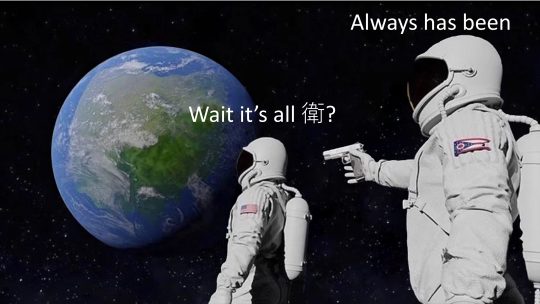
#dolphin noises#graces perfect guide#please be nice to me i am starting from ground zero#i didn't even know the difference between kanji katakana and hiragana until tonight and im still not sure i quite get it#but it was fun to delve into and get my synapses going even though i also have a headache now
2 notes
·
View notes
Text
i think genuinely the proper nouns are the worst part of this whole massive project. its either like. the official english translations are inaccurate between material (i will NEVER not be a bit upset about lelie june's translations lol) or having to be the one to decide how to translate a certain thing INTO english. like i thankfully thought ahead to write the katakana down for each name i was unsure of but now i well. am going to have to pencil in a whole day to go and check what the kana actually mean and then make the decision of how to translate it. like obviously i could just take the kana at face value but sometimes it gets wonky. its a bit of a headache lol
#twist rambles#♟️#sorry i have been on the grind all DAY with volfoss and its been like. definitely a thing of ok starting 2 learn katakana is going to help#me to do before i finish the guide but its so scary for me bc it does add a bit of like. heres actual knowledge and i have to figure out ho#to incorportate that into the doc. its the same thing as trying to figure out how to localize certain things or learning oh heres x or y#cultural thing and i need to take an entire paragraph to explain this to ppl who prob dont care lol but i stay silly ok <3#the amt of time i have to like. copy paste the translation and check like 5 sources to make sure its accurate. its gonna become a LOT easie#when i learn hiragana and start on the scary kanji journey. but rn its so so terrifying for me bc like. the pressure of getting a#translation correct esp when the official eng translations are WONKY w spelling. so like... its kind of a thing where keeping the kana ther#is good but i also am like. hoping it wont be too annoying or intrusive in the guide. anyways its just 5 million translation burdens most o#the time lol. but i stay silly (and have to like talk it out a million times lol)
2 notes
·
View notes
Text
one month into studying japanese and i have now finished reading the first panel of one piece :)
#spent like 2-3 weeks with hiragana and katakana#now i follow a study guide + learning from the words and phrases in one piece
1 note
·
View note
Photo
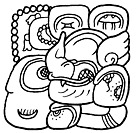
How to Read a Maya Glyph
For over three centuries, the ancient Maya flourished in Mesoamerica. They built giant stone pyramids surrounded by dense jungle, used a calendrical system that made many believe that 2012 would be the end of the world, and created a writing system that is as beautiful as it is complex. Its decipherment is ongoing, even today. In fact, it is so aesthetically rich and difficult to master, one needed to be an accomplished artist in order to write it properly. Fittingly, ancient Maya scribes and artists were all known by the same title: t'zib.
Deciphering Ancient Maya: Syllables & Concepts
The Maya writing system is logosyllabic, meaning its symbols can represent sounds in the form of syllables (like “ma” or “tot”), or they might represent whole concepts (like “river” or “house”). This made the language very difficult to decode, and in fact, scholars initially thought the entire writing system was phonetic due to the unfounded assumptions of a missionary named Diego de Landa. Originally from Spain, de Landa's first language was naturally Spanish. Therefore, when he attempted to decipher the Maya language, he broke it down into individual sounds (vowels and consonants) rather than syllables, the product of which is an inaccurate record of the Maya written and spoken language and a misleading guide for scholars. It wasn't until 1952 CE that it was suggested that the language might be syllabic rather than phonetic. This was a major breakthrough in the decipherment of the ancient Maya written language.
The distinction between a phonetic and a syllabic language is small but essential. A phonetic language uses individual sounds to build spoken words. English, German, and modern Romance languages like French, Italian, and Spanish are phonetic languages, to name a few. When written, each symbol (letter) represents a single sound (a vowel or consonant) like “o” or “b”. Syllabic languages, however, are made up of consonant-vowel (CV) or consonant-vowel-consonant (CVC) combinations, like “ta” or “bot.” Japanese, for example, uses the CV model for the majority of two of its alphabets: katakana and hiragana.
The Maya glyphs are further complicated by their use of conflation, wherein two or more glyphs are combined, and some elements of the glyphs are eliminated or simplified, diminishing their individual complexity in order to create a legible, aesthetically pleasing glyph that fits within the space provided, whether that be on a small decorated cup, or a giant stone stela.
Continue reading...
68 notes
·
View notes
Note
hello!! how are you? i'm reaching out to you because you're the one i keep seeing my dashboard that's related to japanese learning.
i wanted to ask: how do you suggest a beginner should start studying? like, they're N5, and they know hiragana and katakana, but do not know how to move forward from there because it scares them? (it's me, btw, hi hello how are you how are the kids)
thank you so much!! have a good day!!
omg hi!!! im doing ok (im sick rn but it's fine lol) thanks sm for the ask! :3
i think the best thing you can do for yourself is follow your curiosity! at the early stages of learning curiosity will take you much farther than trying to set hard deadlines for yourself - especially when it sounds like moving forward is a bit intimidating at the moment.
so, i'm going to list out things that might be worth checking out. it takes a while for people to figure out what works for them, and since you mentioned you already know hiragana/katakana you're primed to get out there and really explore your options! embrace the feeling of possibility rather than the fear of the unknown :D i say this bc if you get too caught up in making the "right" choice it might just make learning too stressful to want to continue
anyway here's some things that beginners commonly go for when continuing with japanese learning (under the readmore)
find a textbook and work through it there's a bunch out there, I know Genki I is probably the most well-known, but i'm also familiar with Tobira I, Yookoso, and Minna no Nihongo. textbooks are nice because they're literally designed for learners and offer structure to what order you learn kanji, grammar, etc. and come with lots of practice questions. the difficult part is self-teaching through them since they tend to assume youre also using it with a teacher who can correct you and give advice. however they're still pretty good as references imo! if you google "[textbook name] pdf" they're pretty likely to come up
find an app you can use daily there are also a lot of these, and many of them are designed to be used daily so you can better enforce the habit of studying japanese every day. these tend to be simpler and gamefied to make it more appealing and easier to pick up as well. i would just stay away from duolingo as i've heard their japanese curriculum is bad. some other ones i've heard are helpful are Renshuu and Human Japanese.
find an online guide and follow it by "online guide" i mean websites people have compiled of their own guides to learning japanese, such as Tae Kim. these are more accessible and unlike textbooks tend to assume that you are self-studying, so it's easier to follow independently, but usually don't have any practice questions or ways to test yourself. still good as a reference. you can also check out this website that specifies their philosophy on what makes effective japanese learning and what steps to take as a beginner (imo it's very. long. and winds on for a while. but people have said it helps!)
download and use anki anki is an app (both phone and pc) that uses flashcards and that many learners use to retain vocab. their site has decks other people have created, and you can find decks of "core vocab" for example which has flashcards of common japanese vocab. you can also create your own flashcards of words you encounter in the wild to help practice them even after you've read it. i think anki is super useful, but i would probably suggest using it once you have more of a grasp on basic japanese concepts or else you'll just be rote-memorizing things that don't make sense to you yet. but i'm putting it here in case this appeals to you!
take a class or find an online tutor now this one will most likely cost you money, but it offers the most structure and guidance possible which can be extremely helpful starting out since you're able to ask questions and get feedback. you can look into nearby universities who might offer japanese classes, or you can try one of the many language-learning tutor websites out there. i've had some decent success with italki, and there's also JOI (japanese online institute) that i've heard is very helpful too.
watch japanese-learning videos these can be nice bc you can actually hear the japanese and how it's supposed to sound, and it's typically lower effort and easier to get into than actively starting a textbook or class. miku real japanese, japarrot, and 日本語の森 are channels i've watched before and like, but there's plenty others out there too. i'd just steer away from clickbait-y looking ones like "i learned japanese in 30 days and here's how!!" since they tend to not be that helpful.
read simple stories in japanese reading in japanese tends to be the most intimidating step for people, but there's sites that have stories made for beginners that are easy to follow and only use hiragana/katakana. my go-to for my students is usually tadoku since the stories are short, organized by level, and very beginner friendly. a while ago someone showed me natively which lets you look up japanese books, also by level. if you want some good beginner manga, yotsuba and teasing master takagi-san are what i've recommended before
misc. things you can try!
watch anime but intentionally - try to actively listen and pick up on words they say. a long time ago i used animelon, which puts japanese subtitles that you can adjust to show hiragana only
look up jlpt n5/n4 specific materials. they're geared for an exam so it might not be the most natural feeling, but they do tend to be convenient for lists of vocab and grammar. this website has some helpful resources for that
add an extension on your browser that will let you hover over japanese words and see its definition. i use firefox and have 10ten reader to do this, but rikaikun and yomichan are also similar extensions
when you learn the japanese word for something in your house, put a sticky note on it that has the japanse word. like, for "table" you can put a note on it that says 「テーブル」. i heard this can help with retention (i haven't done it myself tbf)
EDIT: ohh i can't believe i forgot this. but join a japanese-learning community! there's discord servers out there, and if you have a friend willing to study with you you can ask them to be your accountability buddy.
anyway, i know that was a lot but i hope that gives you some direction on where you'd like to go next in your japanese learning journey! ^_^ and again, absolutely no pressure to do all of these. the most important thing is letting curiosity be your guide and fostering a positive relationship with learning japanese rather than being afraid. if i can help out some more lmk!!
58 notes
·
View notes
Text
O!Ciel's Real Name Theory
So, where do I start? First we may have some clues, here and there.
But I will start first with Yana's name, we all know that's a pseudonym, so a Brief description of how the Japanese letter system works, it has three types: Kanji, Katakana and Hiragana
Katakana and Hiragana are basically the same, but one is used to foreign language and the other Japanese language
Kanji is composed of ideograms where each one represents a concrete or abstract idea. Also they can have more than one meaning
枢- toboso
やな- ya na
Let's forget about the Yana and focus in the surname, 枢, when you search on a Japanese name site (I'm also an author and these sites are my salvation), one of the pronunciation is this:


The constellation is composed of seven bright stars of the constellation Ursa Major;
Not only are the stars in the Big Dipper easily found themselves, they may also be used as guides to other stars outside of the asterism. Thus it is often the starting point for introducing Northern Hemisphere beginners to the night sky:
Polaris, the North Star (seems familiar?), is found by imagining a line from Merak (β) to Dubhe (α) and then extending it for five times the distance between the two Pointers. Extending a line from Megrez (δ) to Phecda (γ), on the inside of the bowl, leads to Regulus (α Leonis) and Alphard (α Hydrae).
BUT THE STAR THAT CAUGHT MY ATTENTION WAS THIS ONE:
By following the curve of the handle from Alioth (ε) to Mizar (ζ) to Alkaid (η), one reaches Arcturus (α Boötis) and Spica (α Virginis). A mnemonic for this is "Arc to Arcturus then speed (or spike) to Spica."
Why was this the only star that caught my attention?
No specific reason the name sounded good to me.
Jokes apart after some research, I'm positive this is O!Ciel real name:
ARCTURUS PHANTOMHIVE
Or Arturo Phantomhive, since u know, French names
But if you ask, do I have more proof or evidence?
HELL YES
Evidence 1
Firstly, let's go back a little and talk a little about colors, starting with Weston High School, which, as everyone knows, is an improved version of Harry Potter but without magic.
The only house that was not represented was Hufflepuff, which has the main color: yellow.
Instead we have Violet Wolf which is represented by the color violet/purple


What does it have to do with it?
They are complementary colors in the spectrum of colors, any painter or artist knows that
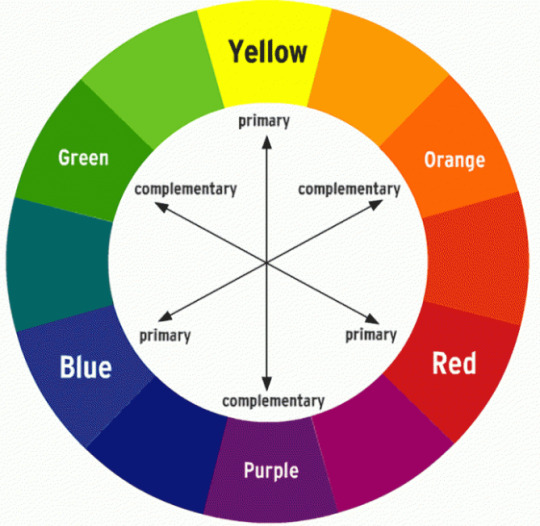
This was also applied to the Green Witch Arc, which in this case was used to replace Little Red Riding Hood
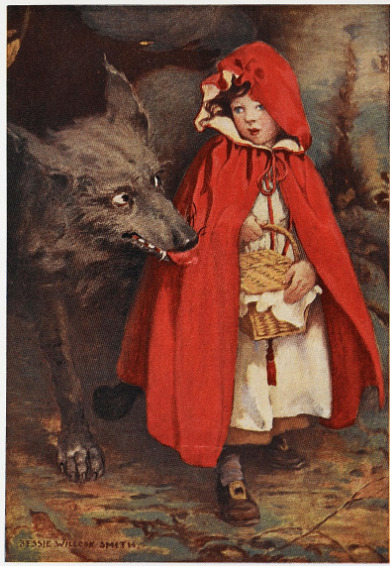

So, what else does this have to do with it?
Well, Arcturus is an ORANGE star
While Sirius is a BLUE star

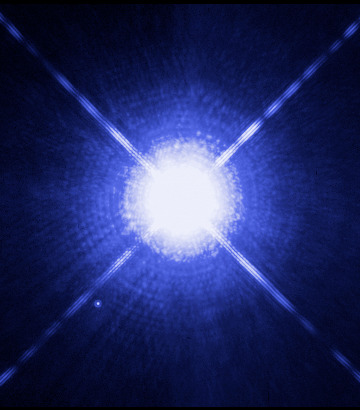
Yes, the two are complementary colors also the fact O!Ciel is always using Blue...
Evidence 2
I'm not going to deny this one but it's kind of stupid, but it could still be relevant
Did you notice that the name Ciel Phantomhive has the same initials as his grandmother?
C.P.
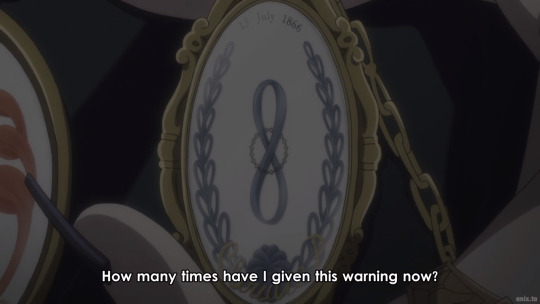
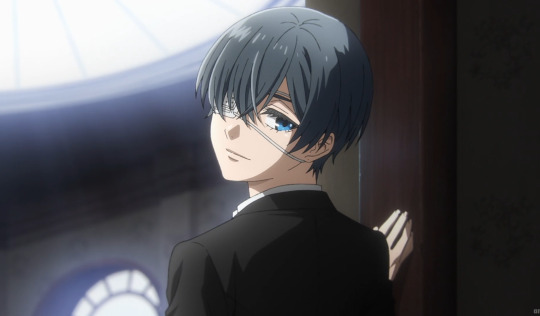
Well, if the name Arcturus Phantomhive has the same initials as if Madame Red had married Vincent
A.P.
And all the evidence points to O!Ciel being closer to his mother than his father…
You understand what I meant
#black butler theories#black butler#kuroshitsuji#ciel phantomhive#phantomhive twins#o!ciel#r!ciel#emerald witch#yana toboso#astre phantomhive#sirius phantomhive#weston college arc#black butler season 4#kuroshitpost
76 notes
·
View notes
Text
Guide to Understanding Genocider’s Many Names
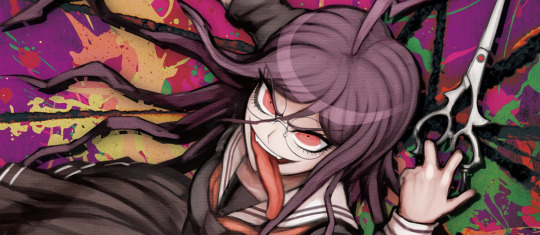
Genocide Jack has many names and it can be hard to understand why so many people use different ones or spell them differently, so I attempted to make a guide that is as comprehensible as possible.
Something to know before hand
Kanji: More complicated, such as 翔
Hiragana: Simple and smooth, such as しょう
Katakana: Simple and sharp, such as ショウ
Let’s get the “Genocide” part out of the way
This part of her name is written in katakana, (ジェノサイダー) and you’ll notice the line at the end. This means the sound is extended, so instead of “da” it’s “dā”. Japanese doesn’t have an “er” so this is used instead, since they sound similar. Her official title is Genocider. The localization simply switched this is be Genocide. I’m not sure why, maybe since Genocider isn’t actually a word, but that’s just my best guess.
Syo VS Sho
Here’s where it get complicated.
In order to make sounds like “kyo”, “bya”, or “ju”, two hiragana are need. First, a character ending in i, such as ki, bi, or ji, characters pronounced like ka or bu cannot be used. Second, one of the three y’s (ya, yo, or yu) in a smaller form.
The character “ki” (き), combined with “yo” (よ), would make “kiyo”. But if the “yo” is written smaller (よ→ょ) then the “i” from the first hiragana is replaced by it. So since きよ is Kiyo, きょ is Kyo. Same for “bya”. びや is Biya, so びゃ is Bya.
Now, we have our “exceptions”, shi (し) and ji (じ). You’ll notice they look very similar, which is why they are both “exceptions”. For “ji” (じ) and “yu”, (ゆ) rather than jyu it’s just ju (じゅ). It’s different since in the case of kyo and ko, it’s a whole other sound, but jyu and ju are pronounced the same, so the y isn’t needed.
But in all my examples, you’ll notice the first hiragana is two letters, which is why it gets tricky for “shi”. Like jyu, shyo is unnecessary, however, h and y are pronounced the same here, so you can remove either one and get the same sound.
Quick Note: I used “kyo”, “bya”, and “ju” as examples since there are Danganronpa characters with those in their names, but, just to clarify, they aren’t the only combinations possible.
The reason I put exceptions in quotes is because this is romanization, there is no rule book saying you must write it this way. While Sho is the most common way to write this, it doesn’t mean Syo is wrong. In fact, the games themselves use this.
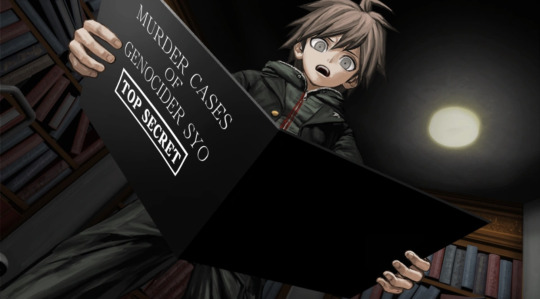
However, they also use Sho.

So, really, both are correct.
Syou VS Syo / Shou Vs Sho
> I’ll be calling her Sho/Shou here for convenience.
翔 should be spelt with a “u”, since it’s しょ“sho” then う “u”, so “shou”. Still, a lot of times the u is excluded because it doesn’t sound too different in English. English speakers pronounce “Shuuichi” and “Shuichi” the same, so I suppose the u is unnecessary. You’ll find this is common in a lot of different translations. Even Japanese media that use the alphabet, like the pictures above, will sometimes leave out the u, if following an o or another u.
Jack & Jill
These are just the titles that are strictly English. Since the whole thing about Syo in the beginning was that she’s a serial killer, society will assume it’s a man, so the public will give her a masculine name. In English, people will hear Sho and see it’s foreign, so there’s no gender association. I think it was changed that way so we’d see it as masculine. While I think they should’ve kept her Japanese name like everyone else in the game, I cannot deny how easily Genocide Jack rolls off the tongue.
Overall
All the names work, use whatever you want.
I hope this made sense to at least one person. If it doesn’t, feel free to ask for further clarification!
#danganronpa#genocide jack#genocider syo#genocide jill#genocider sho#praying I didn’t misspell anything
82 notes
·
View notes
Text
🌟 Learning Japanese 🇯🇵
🔔 ���たしのガイドは、人が英語を話す向けー (◔‿◔)
The following guide is based on my personal experience. I am not an authority on the matter and I am still barely a beginner regarding Japanese.
What am I doing?
Learning languages seems non-lienar and that's partly true (at an intermediate level). But, when you're first starting out, there's generally clear goals to work toward.
Your Beginner Goals
Study and master kana
Japanese employs hiragana and katakana in conjunction with kanji. Together, hiragana and katakana make up kana.
Learn the kana (hiragana and katakana)
Learn the difference between kunyomi and onyomi (kanji)
Delve into grammar and establish some foundational vocab
Immerse yourself with input content (movies, shows, etc)
Study and practice a basic form of "pitch accent"
Continue developing your vocab and particle knowledge
Learn about polite versus casual talk and social culture
Use the language (letters, blog, diary, etc)
Seek conversations to apply the language properly
Find and study tests like JLPT to gauge your progress
What can I use?
Duolingo
If this was your first pick, you're naive but not foolish. It'll teach you enough to get help if you're lost in Japan. But it won't be enough to hold a conversation. Give it a try and see if it works for you. Duolingo is free.
I recommend using Duolingo as a supplementary learning tool rather than your primary learning tool
Textbooks and Guides
Many learners and even classes praise numerous textbooks. I for one received a recommendation for Tae Kim's Japanese Guide. So, I'll recommend it to you. Don't be afraid to see out other guides or attempt some textbooks. However, one should always remember that the textbook is NOT demonstrative of naturalistic Japanese.
For example, 「私は猫が好きです」 is what a textbook correctly teaches, though 「猫好きだよ」 is acceptable and more natural in casual Japanese
Building vocabulary
If you want to develop your vocabulary, you can use JLPT anki decks. Anki is a flashcard program for desktop and mobile. You can also use anki in conjunction with a dictionary like Jisho to create new flashcards decks (suited to the words you'd like to learn). You may also pick up vocab from Japanese media (i.e, anime, manga, books, content creators, music, etc).
If you're using Jisho and want to find a word you only know in English, search for it using quotation marks. For example, "school" or, if you want a verb "to learn" ~ it should help. You can spell out Japanese words normally by just typing... i.e, watashi.
Good input versus Bad input
Immersing yourself in Japanese media and culture is good but you need to be mindful of the content you're consuming— take note of the context behind events, interactions, or the relationship of speakers. Be especially mindful of anime and manga— both are known to use hyperbolic language or phrases that aren't commonly used in day to day conversation. Fortunately, some anime and manga do use everyday language, and you can usually find lists.
I recommend using the Tofugu blog to learn about both Japanese language and culture. But if you don't like reading, there are many YT channels like Kaname Naito and NihongoDekita with Sayaka. For general immersion though, here's a sweet vlog channel, a JP Warframe creator, and a natural born otaku.
#jp blog#jpblr#japanese#lang blog#langblr#lang#language blog#language blr#languages#language#duolingo#anki#jisho#immersion#input method#help#guide#study blog#studyblr#study#studying#japanese studyblr#japanese study
32 notes
·
View notes
Text
Notes on ひらがな 📚✨️

Disclaimer: I haven't been posting a lot lately (life's been hectic) so I decided to start sharing some of my notes. These were taken a while back, based on Tae Kim's grammar guide.
Japanese consists of two phonetic scripts (Hiragana and Katakana, referred to as kana), with a little less than 50 characters each. Today we'll study Hiragana!
Hiragana (ひらがな) is used for a couple of reasons:
• Grammatical purposes;
• Words with really difficult/rare Kanji;
• Colloquial expressions;
• Onomatopoeias;
• Or by beginner students and children, in place of unfamiliar Kanji;
Every character in Hiragana corresponds to a [vowel] or [consonant + vowel] syllable sound, with the exception of [ん].
When practicing by hand, it's extremely important to remember that stroke order and the direction of strokes matter a lot! You don’t want to end up with the writing skills of a clumsy toddler.
(the chart bellow has hiragana and katakana btw, the hiragana characters are on the left side)

source: r/japaneseresources on reddit
Thought learning all the characters was hard enough? Fear not, there's additional sounds for you to learn.
📚 The Muddied Sounds 📚
There are five more consonant sounds that are written by affixing two tiny lines (dakuten) or a tiny circle (handakuten) to a character. This creates a less clipped version of the consonants, as you can see bellow:

source: japanistry.com
📚 The Small [や], [ゆ] and [よ] 📚
We can combine a consonant with a / ya / yu / yo sound by attaching a small [や], [ゆ] or [よ] to the /i/ vowel character of each consonant.

source: guidetojapanese.org
📚 The Small [つ] 📚
A small [つ] is inserted between characters to carry the consonant sound of the second character to the end of the first.
Note that when you encounter a small [つ] between characters, there's almost always a clipping sound to the pronounciation! You gotta make sure to clip the right consonant (the consonant of the second character).
Example: ざっし (zas-shi / magazine)
📚 The Long Vowel Sound 📚
You can extend the vowel sound of a character by adding [あ], [い] or [う] to them. See the chart bellow:

source: guidetojapanese.org
Example: to create a extended vowel sound from [か], we add a [あ] to create [かあ].
Remember to actually hold your vowels long enough, or you'll end up saying stuff like [ここ - here] instead of [こうこう - highschool].
Lastly, there are a few exceptions where and /e/ vowel is extended by adding [え] or and /o/ vowel is extended by adding [お], but those are few and far between, so pay attention but don't worry too much about it.
Example: おねえさん (older sister)
See you next time! 💌
#laura learns#laura studies#japanese langblr#japanese#japanese notes#hiragana#studyblr#student life#study blog#studyinspo#langblr#learning japanese#japanese learning#japanese studies#japanese resources
44 notes
·
View notes
Text
The Entirety of Japanese, Lesson #1
AKA - I'm sorry, you do have to learn all three scripts.
Welcome to our first lesson! Today, we are going to learn how to read Japanese.
Sort of.
See, it's not something you can learn in one day, or one lesson. Learning a language is a gradual process that doesn't cement until you start *using* it.
So we will go over the basics, both the WHY three scripts and the HOW to learn all three over time, and then provide 10+ FREE resources from all over the internet for you to practice with!
Let's go!
Why All Three Scripts?
Short answer: because I said so.
Kidding.
The Japanese language has no spaces in it. Unlike English where there is a space between each word, Japanese sentences look like this:
スモモも桃も桃のうち
All three scripts are in this sentence. It translates to "plums and peaches are both like peaches". An odd sentence, but here's why I chose it...
When you write it in *just* Hiragana (the basic, "first" phonetic script), it looks like this:
すもももももももものうち
Yikes. So many も, with no way to tell apart the multiple words in the も train.
So... how can you tell similar words apart when written out?
Wait, let's look back a bit. Can you tell where different words are in the sentence before? Yes. Even without being taught *anything* about the Japanese language, you can tell where different words start just by looking at it.
By writing in multiple scripts, you can tell similar words apart.
Okay... But How Do I Learn Them?
There's quite a few ways to learn them. In fact, on Thursday we will be publishing community responses from our Discord detailing how THEY learned the scripts.
But for now, here is the two first scripts you'll learn in their entirety, thanks to Coto Japanese Acamedy
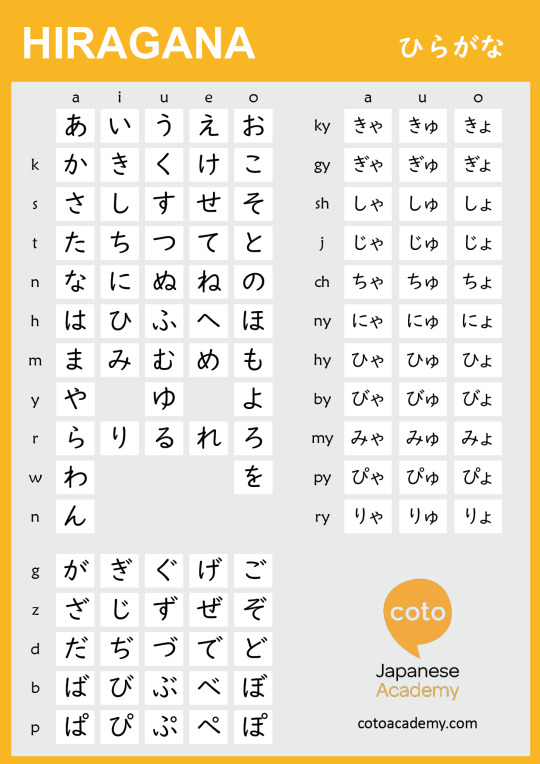
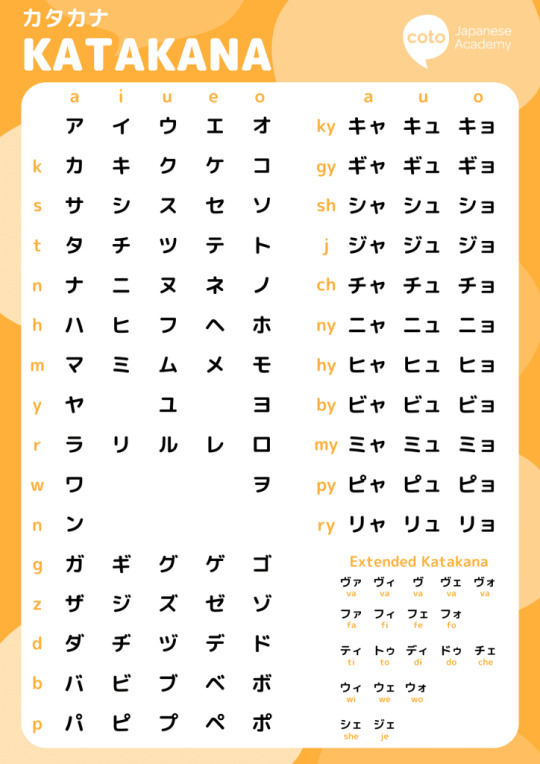
You'll learn these first for three reasons:
First, they are easier.
Second, you can spell any word in Japanese with these two scripts. Not a hard and fast rule, but Hiragana is used for native Japanese words and Katakana is usually used for international loan words, emphasis, names, and 'sound effect words', aka onomatopoeia.
Third, you'll see Hiragana above Kanji (the difficult one) that tells you how to pronounce Kanji.
As far as actually learning them, you *could* just write them down over and over.
Writing is super important when learning Japanese.
But it might be easier to start with some apps, games, and videos where you can learn the characters both in context AND within words.
Here's our favorite FREE resources:
Duolingo (Website, Android, and Apple) is great for learning singular words and Hiragana / Katakana, however explanations of grammar is limited to desktop. Still, PERFECT for the beginning stages regardless of device.
Bunpo is another free app for learning Japanese!
JapanesePod101's videos on Hiragana and Katakana over on Youtube are fantastic for hearing natural speach.
Tofugu's Hiragana and Katakana blog posts have the * best * mnemomics, with sound bites.
Busuu's (Website, Android, Apple) Japanese course starts off with Hiragana words to get you speaking immediately.
Kana (Apple, Android) is a free app dedicated to JUST Hiragana and Katakana.
Tae Kim's Guide to Learning Japanese is the holy grail for new Japanese learners. Of course, it has a no-frills explanations of all three scripts.
Japanese Ammo with Misa has detailed lessons on everything, including Kana.
Here's a video on the difference between printed and written Hiragana fonts.
And finally... our discord server.
Wait... what about Kanji?
Well, the problem is there's a lot to learn. A LOT.
You'll be learning them over the course of yearssssssss. But that's fine; you can tune into our lessons to learn them.
Join right here to practice what you learn! You'll also gain access to new friends learning the same language AND more free resources.
We can't wait to see you there!
#japan#japanese#japanese language#learn japanese#japanese studyblr#nihongo#japan travel#japanese culture#japan trip#anime and manga#anime#anime art
190 notes
·
View notes
Text
⋆⁺。˚⋆˙‧₊🌻₊‧˙⋆˚。⁺⋆
A self made study guide, for when you have adhd and want to learn a new language

Hello everyone! Your local language nerd here with a guide Ive developed for studying and learning a new language. My credentials are that I know three languages fluently, and this advice is also from my mom, who speaks eight languages, with four of them on professional levels.
My method differs from the usual, I in fact do not recommend that you memorize an alphabet and then start learning words. In fact my advice is the opposite. Learn phrases, words and sentences before you learn the alphabet. My method is easy, make a dictionary for yourself with verbs, adverbs, phrases etc. Think of it as your only resource if you suddenly get teleported to the country of said language.
Why do I recommend this? Well for a myriad of reasons, main one being that variety helps you remember, monotony makes you forget.
In my studies for learning Japanese sitting and repeating hiragana did Not help, in fact it bored me to no end, but when I made a list of phrases and wrote them in Hiragana, Katakana, Kanji, Romaji and English I started subconsciously connecting the symbols to different sounds. The balance of repeating tasks and variety in what the task had was enough to keep me focused without getting bored! Besides, learning short phrases for navigation and chatting with people gives you a sense of achievement early on! Which is undeniably nice as well. Everyone likes feeling like they learned something useful at an early stage! And with enough exposure you will learn the phonetics as well
So to repeat! Make a dictionary for yourself in your target language! Add in whatever you feel is important to know for the stage youre in currently, and if youre ambitious add in the grammar as well. Or do like I did and make another notebook for that!
Anyways, I hope this method helps someone like it helped me, feel free to ask questions if you have any!
#langblr#language learning#language learning guide#learning a language guide#the flower blooms and talks
11 notes
·
View notes
Text

Hello Hello!
I've been seeing a few posts about people not knowing what to do after doing hiragana, katakana and some kanji, so I'm going to give some of the things that gave me a guideline to work with!
First off is Tofugu!
Tofugu has a lot of resources and even their own podcast you can listen to, where they talk about experiences (like the jet program), along with words and grammar, when to use them and what to use instead!
But what I'm focusing on is their ridiculously detailed guide to learning japanese! go have a read if your struggling! like they say "raise the floor before you raise the roof!"
Next is Renshuu!
Renshuu has decks you can choose from, be it genki vocab to grammar or N5 and up! they do have decks they recommend at the beginning like Japanese basics which they call N6. (don't be like me and skip it if your a beginner. I went straight to N5 but I'm struggling with the grammar since they are using words i skipped.)
They also have a leveling system where you can evolve your own renshuu for every few levels you've passed! there are also crosswords, mini games and more to make learning japanese more enjoyable!
If anyone has other things they want to add feel free to do so!
#japanese langblr#japanese studyblr#japanese#Tofugu#Renshuu#these are my main things i use#of course i have the genki textbooks as well but i only use them to test myself and to see how much i know
44 notes
·
View notes
Note
haiii!! sorry to bother! I've been wanting to continue learning Japanese (cuz I'm so tired of seeing contents and not understanding a single thing) so if it's okay, can you give some tips on where to start, routines, or anything at all? Thank you!
haii anon! idk if you sent me an ask before this but ftr you r never a bother! i do love getting asks, hehe. i will put stuff under the cut! i hope it can be of a bit of help 🙏
learning japanese tips ↓
where to start
first things first, learn the basic alphabets. hiragana and katakana make up the basis of japanese — if you cant somehow drill these in your mind, its gonna be hard throughout. for example, you could:
use a flash card site: quizlet is what i used. but its not the only site out there; honestly there r probably better ones out there atp lmao
get your traditional paper and pencil, and drill drill drill.
to an extent, using textbooks like genki (or tobira for more advanced learning) can help with basic grammar and kanji. or it can sort of guide you there by using simple dialogues, articles, etc.
also, the internet has some resources to help you as well, geared toward japanese learners. probably the most well-known one would be tae kim’s japanese guide, but other resources like maggie-sensei and jlpt-sensei r also options to look into!
at a certain point, when learning kanji (a v long-term, ongoing process), i would recommend investing time to get acquainted with the parts of the kanji, known as radicals. why? bc kanji at its core is derived from images, so understanding parts of the image can help you glean the meaning! in the same way you look at a painting, and through visual analysis, can understand the purpose behind it. truth be told, when im translating, if i dont know a word, i usually use context clues and whatever kanji or radicals i can recognize in the word itself to guess the meaning.
for example: lets take the word [薬] (kusuri), which means medicine. here we can see the [⺾] radical on top. this radical is called [くさかんむり] (kusakanmuri), and it denotes “grass.” and if we look on the bottom, there is [楽] (raku), which means comfort or relief, that sorta vibe. so combining these, it would be “grass that can make you feel comfort or relief,” which is medicine (i.e. back in the olden days, herbs were often used as medicine). so, like this, even if you werent sure how to pronounce the kanji, you could glean its meaning, especially after learning kanji for a while.
routines
hands down, my biggest recommendation for beginners would be nhk easy japanese news! its easy to keep up a routine bc its the news; theres always smth going on to read there. just invest some time to read an article on the site. they go out of their way to use more simple vocabulary, and they put furigana (the kanji pronunciation) for every kanji they use. if you use google chrome, you can also look into extensions like rikai-chan, which allows you to easily search up the meaning of kanji you see on a webpage.
songs r also a good way to get acquainted as well. there r some sites where you can search up lyrics with the kanji and their meanings, plus translations, and romaji as well. animelyrics dot com, for example, has some nice japanese learning features if you search for some songs on there, though their db focuses mainly on anisongs.
as you feel more confident in japanese, you can also sort of listen in on vtubers or radios and whatnot. this mainly has an audio focus, but it can help sort of expose you to the way native japanese ppl speak. for example, i sorta listen in on this japanese vtuber playing through twisted wonderland (for the first time)…he speaks in kansai dialect, actually, which is the same dialect jude speaks in the jp version. but i would more so recommend this option if you feel more comfortable with japanese especially.
7 notes
·
View notes
Text
Hiragana Full Chart - Japanese Alphabet for beginners
Hiragana is the most fundamental Japanese alphabet, representing the 46 primary sounds used in Japanese. Learn Hiragana will helps you understand how to pronounce Japanese, grammar structure and word using...
If you want to master Hiragana in just one week, don't miss out this website!
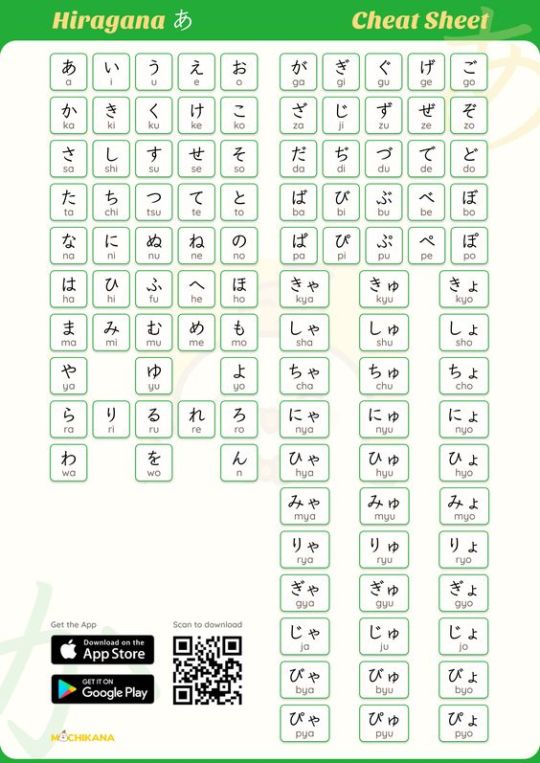
28 notes
·
View notes
Text
Jackson's Diary Headcanons
Because I saw someone else post theirs so now I wanna post mine :P But also some of these things are just canon lol
Jackson: Transmasc, He/him, maybe bipolar?? bisexual preference to femmes (i'm totally not projecting onto him), helps Carol bake sometimes, reads the newspaper like an old man (got the habit from Frank), secretly likes gossiping with Ronald on occasion, spends most of his weekends doing homework or reading comics, zodiac is Taurus,
Exer: Genderfluid, unlabeled (canon) with a preference to boys, autistic, music is LIFE, literally cannot do chores unless music is playing, would listen to Fallout Boy and Imagine Dragons, from Jamaica
Pamela: cis she/her, bisexual, has an undercut because her hair is more manageable that way, had a crush on Brenda at some point, sometimes gets Spanish and English grammar mixed up, her parents have English as a second language so she and Marco have to translate for them sometimes, Dia de los Muertos goes hard 🔥, visits family in Mexico whenever she can (Marco usually takes her because of complications with her parents not being American citizens), knows some traditional dances that her mom taught her, would read the A Good Girl's Guide to Murder series,
David: bisexual (canon) no preference, cis he/him (canon), ADHD, randomly really good at swimming, still steals Exer's sweaters often, would listen to Canon Gray (is it gray or grey?? also hello kitty I know I just summoned you here by saying "conan"), knows how to sew, has small flecks of gray in his eyes, is of German and Irish heritage
Brenda: unlabeled , she/it because yes, models Jolie's clothes, had a crush on Pamela at some point, EXTREMELY good at basically every sport in the history of ever, if "looks like a cinnamon roll could kill you" was a person, ADHD, would listen to Chappell Roan, is of German and Irish heritage,
Ronald: queer, ace (canon), all pronouns and neopronouns but prefers he/she, looks like he could kill you but is a cinnamon roll, treats Jackson like a brother, writes to his mother and sister(s) in Russia often, she absolutely amazing with kids and animals, has the patience of a god, has weekly gossip sessions with nearly all of her friends
Ken: *cracks knuckles*, he/they/it, pansexual, autistic and ADHD, totally has a thing for redheads, sensory issues. thought he was gay for a solid two years before realizing he was pan, they love reading fantasy, favorite animal is a dragon because why wouldn't it be?, fluent in Japanese but only knows how to read Hiragana and Katakana, not Kanji though, loves drawing hates painting, love/hate relationship with pottery, may or may not have the tiniest crush on Jackson, questioned if they had a crush on Jolie (they didn't), would marry Jolie for tax purposes though, has good grades because of pressure from his parents (his grades in ELA and S.S. could be much better though), has MANY inside jokes with its siblings, would listen to Imagine Dragons and AViVA, knows some Eisa dances (Search "mirukumunari" on YouTube, it's one of my favorite Eisa dances), would read Wings of Fire as an elementary school student,
Jolie: demigirl she/they, sapphic, would listen to Girl in Red, loves being crafty, WILL BECOME FAMOUS FOR HER CLOTHING DESIGNS BECAUSE I DO NOT WANT ANOTHER GENIUS WOMAN OF COLOR TO BE FORGOTTEN TO TIME AND DESPAIR, became/will become a big advocate for queer rights and poc rights, took over the cafe once her mom died/retired, Brenda and Ken model clothes for her often, also Jamaican (or from the Bahamas? hmmmmm), very neat and organized and has a calendar that has the rest of her senior year planned out to nearly the exact minute of everything, models her own clothes as well, does photography as a hobby
Timothy: Transmasc he/him (canon), dyed his hair red, writes/draws comic books (Jackson proof reads them like the nerd he is), babysits often, chills in the library at school whenever he can, knows American Sign Language and how to read lips (might be canon?), would've read Warrior Cats, can hold basic conversations in Russian
I might edit this later idk
#jackson's diary#my post#text#hc#headcanon#head canons#headcanons#head canon#hcs#HCs#jd#Jackson smith#Pamela lopez#exer campbell#David miller#Brenda miller#Ronald novikov#Timothy Jackson's diary#jolie sea#Ken okamoto#Eisa dance#jacksons diary#RAHH#I'm insane dudes
8 notes
·
View notes